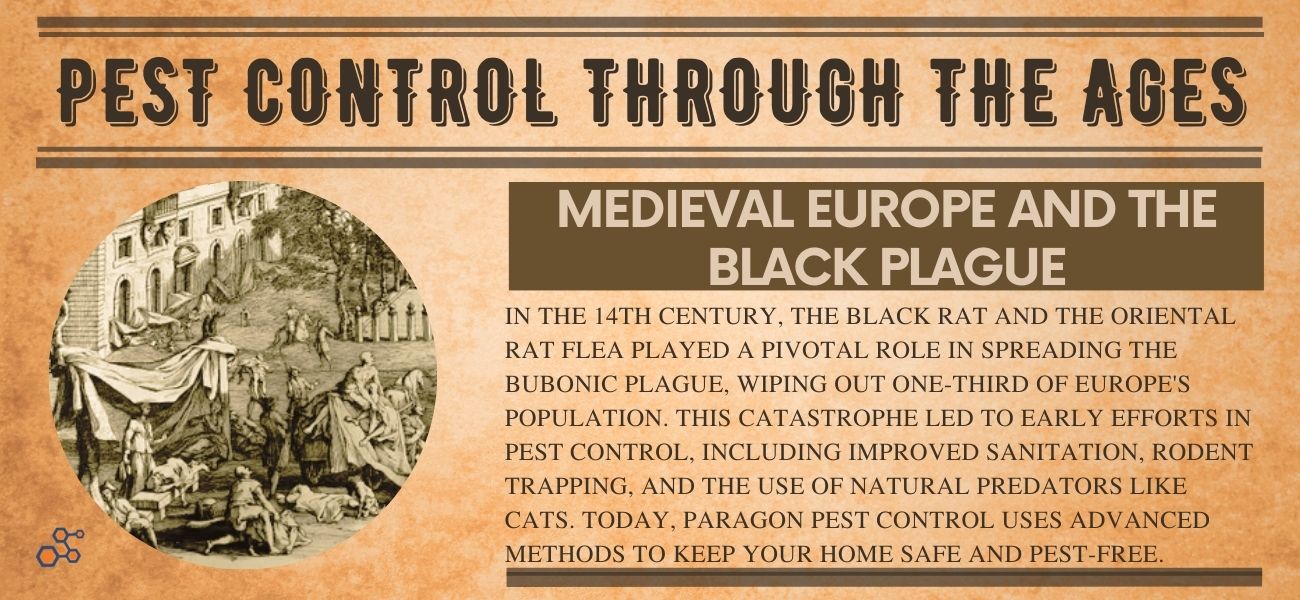Pest Control Through the Ages: Medieval Europe and the Black Plague
Welcome to our series, "Pest Control Through the Ages," where we explore the history of pest control and its evolution over time. Today, we delve into Medieval Europe, a period marked by the devastating Black Plague. This pandemic was significantly exacerbated by rats and fleas, highlighting the critical need for effective pest control.
Rats and Fleas: Vectors of the Black Plague
In the 14th century, Europe was struck by the Black Plague, also known as the Bubonic Plague. This pandemic wiped out approximately one-third of Europe's population, and rats and fleas played a pivotal role in its spread.
The Role of Rats
Rats, particularly the black rat (Rattus rattus), were common in Medieval Europe. These rodents thrived in the unsanitary conditions of the time, living close to human populations and easily spreading disease. Rats themselves were not the direct cause of the plague, but they carried fleas that were infected with the bacterium Yersinia pestis.
Fleas as Carriers
Fleas, specifically the Oriental rat flea (Xenopsylla cheopis), were the primary vectors of the Black Plague. These fleas would feed on infected rats and then bite humans, transmitting the plague bacterium. The bacteria would multiply within the flea, causing it to regurgitate infected blood into the bite wound of its host, thus spreading the disease.
Early Pest Control Efforts
The catastrophic impact of the Black Plague led to early efforts in pest control, focusing primarily on rodent populations. Here are some methods used in Medieval Europe to combat the plague:
Improved Sanitation
One of the first steps taken was to improve sanitation. Towns and cities began to clean streets and dispose of waste more effectively to reduce the rat population. Although knowledge about germs and bacteria was limited, the connection between cleanliness and health was becoming apparent.
Rodent Trapping
Trapping was a common method to control the rat population. Various traps and baits were used to capture and kill rats. This method, though rudimentary, helped to reduce the number of rats in populated areas.
Natural Predators
Cats were highly valued during this time for their ability to hunt and kill rats. Many households kept cats to help control the rodent population naturally.
The Evolution of Pest Control
The Black Plague was a turning point in the history of pest control. It underscored the importance of managing pest populations to protect public health. Over time, pest control methods have evolved significantly, incorporating advanced technology and scientific knowledge.
Modern Pest Control Solutions
Today, pest control is a sophisticated field that uses a combination of biological, chemical, and mechanical methods to manage pest populations effectively. At Paragon Pest Control, we build on this long history, offering comprehensive solutions to keep your home and business safe from pests.
Conclusion
The Black Plague in Medieval Europe highlights the critical role of pest control in public health. By understanding the past, we can appreciate the advancements in pest control that protect us today. For effective and modern pest control solutions, contact Paragon Pest Control.
For professional pest control services, call Paragon Pest Control today at (972) 435-9797 or visit paragonpestdfw.com. Let's ensure your home remains safe and pest-free.


